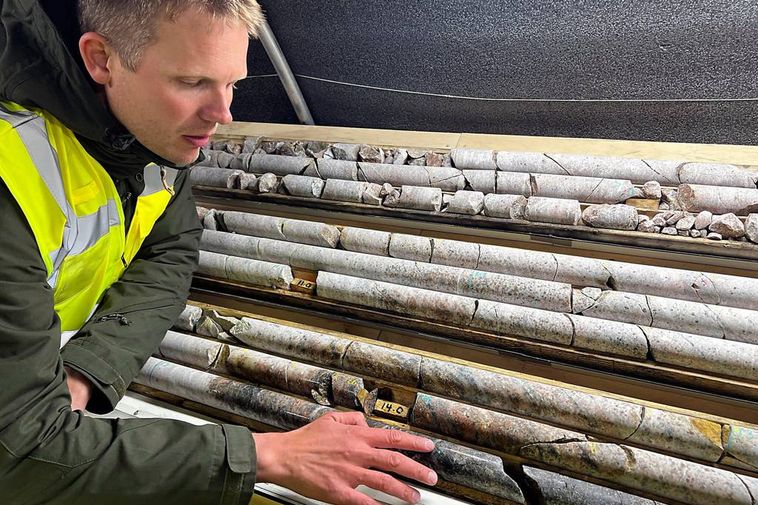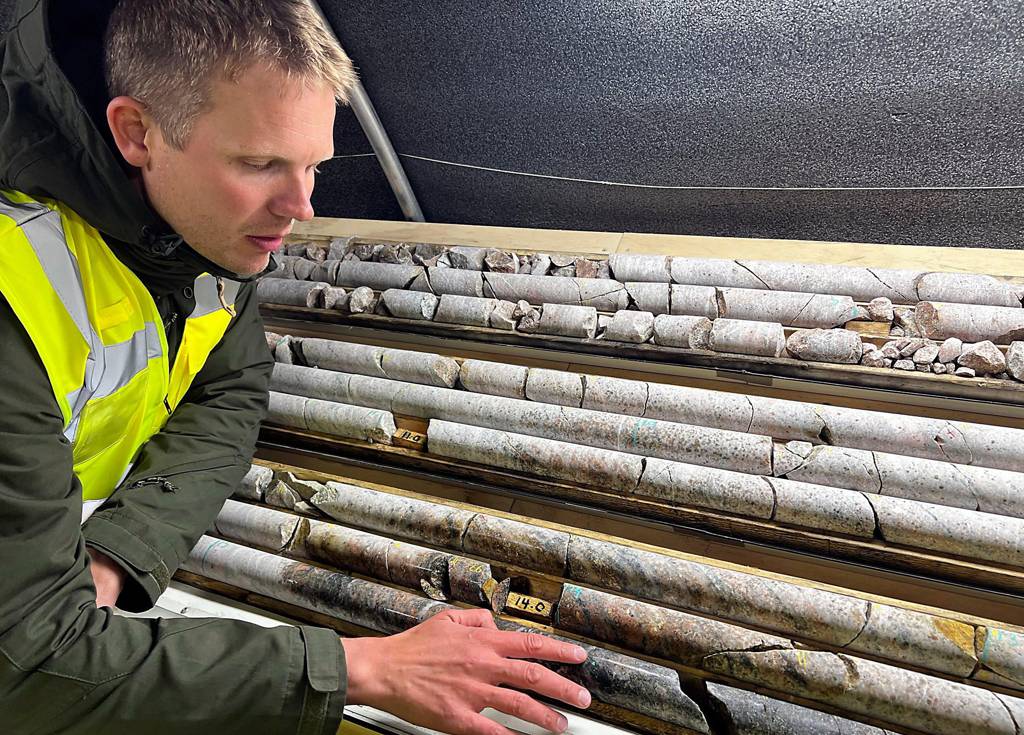Eldur Ólafsson, CEO of Amaroq Minerals, examining samples at the company’s Nalunaq gold mine in Greenland.
mbl.is/Stefán Einar
Amaroq Minerals has, for the first time, discovered high-grade rare earth elements (REEs) at the Ilua pegmatite zone in the Nunarsuit licence area, part of the Gardar region in southern Greenland — an area believed to contain up to 20% of the world’s rare earth resources, according to the EU’s Joint Research Centre.
Chemical analyses show an average composition of 27% heavy REEs and 73% light REEs, including 21% key magnetic elements such as neodymium (Nd), praseodymium (Pr), dysprosium (Dy) and terbium (Tb).
Preliminary field studies indicate an extensive pegmatite system several metres wide and stretching for about five kilometres, with multiple parallel fractures that Amaroq plans to map and drill during the 2026 exploration season.
“
Highly positive information
”
James Gilbertson, Amaroq’s chief geologist, described the results as “a highly positive confirmation” of high-grade REE mineralisation within the company’s licence area.
He noted that the minerals appear to occur in monazite, which simplifies processing compared to more complex mineral structures found elsewhere in Greenland.
Importantly, the mineralisation also seems to have low uranium content, making it more viable for extraction.
Amaroq says the discovery marks its first step into rare earth exploration in Greenland, expanding beyond its established gold projects. The company plans further drilling and exploration next year, aiming to create long-term value for shareholders and strengthen Greenland’s role in the REE supply chain.
Here
is a report with further information.

